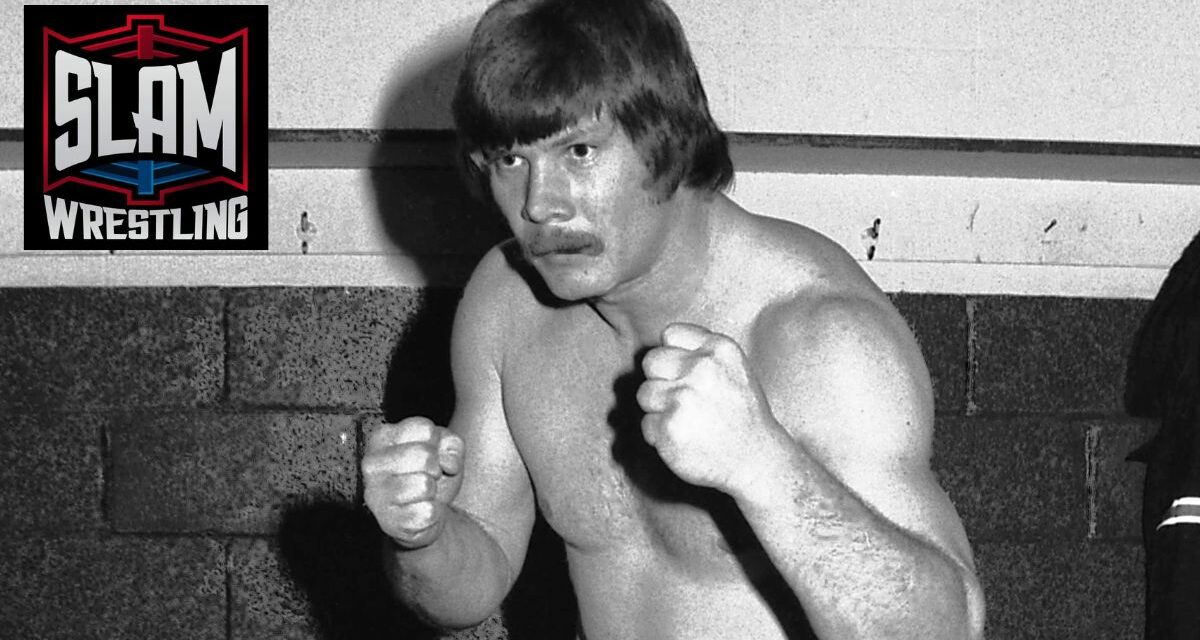Bob Bruggers, who died on Friday, May 10, owes his wrestling career to his roommate while he played pro football — Wahoo McDaniel.
They were both on the Miami Dolphins in the American Football League in the inaugural 1966 and 1967 seasons.
“When I was with the Dolphins, my roommate was Wahoo McDaniel,” reminisced Bruggers to this writer in 2011. “In the off-season a couple of times, him and I would take a road trip in a car and go to wherever he was going to wrestle, and then we’d go play golf. I’d watch the wrestling matches with him. But basically that’s how I got involved in it.”
Wahoo never really encouraged him to get into pro wrestling, though he had planted a seed.
They made for quite the pair, and Miami News columnist Bill Braucher wrote about a night of escapades in 1968 that resulted in both men being cut from Miami:
Well, Wahoo McDaniel was on a plane, having been booted from the squad that weekend by Coach George Wilson. The tough Choctaw Indian and his faithful white companion, linebacker Bob Bruggers, both were dismissed after a downtown argument with an off-duty policeman.
The cop claimed that Wahoo, emerging from a Denver pub, had smacked his car in the parking lot. When the cop protested, push came to shove. The officer said he was able to subdue Wahoo only with the aid of two college students.
After McDaniel was bailed out by Bruggers and Wilson, both linebackers were sent packing. “When I got to the jail and smelled the two of them, I thought I’d walked into a brewery,” Wilson said. Good-bye Wahoo and Bruggers.
Traded to the San Diego Chargers, Bruggers played linebacker for three more seasons. The 6-foot-1, 224 pounder was traded to the Cincinnati Bengals in May 1972, after he held out in San Diego, having spent some time injured.
Cut from the Bengals in September 1972 (“[Coach] Paul Brown really didn’t like me”), Bruggers hit the road to St. Louis to see his daughter, and then went back to Minneapolis, where he had been a star basketball and football player.
First it was at Danube (Minn.) High School, about 100 miles west of the Twin Cities, where Bruggers helped the team make the state basketball high school tournament in both 1961 and 1962. Entering college on a basketball-football scholarship, he was forced to choose one sport for second year, and it was football. He played with the Minnesota Gophers from 1963 to 1965, and then signed with the Dolphins as a free agent. Years later, Bruggers was inducted into the University of Minnesota’s “M” Club Hall of Fame, the MSHSL Hall of Fame and Minnesota High School Basketball Hall of Fame. The arena in Danube is now known as the Bob Bruggers Auditorium.
Back in 1972, at his wit’s end and unsure what to do, Bruggers called up his old roommate. Bruggers recalled the conversation with Wahoo:
“What are you doing?”
“I really don’t know.”
“Why don’t you talk to Verne Gagne and start wrestling?”
Gagne, like Bruggers, had gone to the University of Minnesota, and the veteran and the vagabond football player had known each other. Gagne loved to work out with the wrestling team at the university, and Bruggers did a little amateur wrestling too, though was not officially on the team. “He would work out with me because of my weight,” said Bruggers. Before Bruggers had ever met Wahoo, Gagne had told Bruggers to look him up after he stopped football to try pro wrestling.
“I went to Verne, and from there, the rest was history.”
That class at Verne’s farm, with the ring in the barn, was historic too, and included Greg Gagne, Ken Patera, Ric Flair, Jim Brunzell, and Khosrow Vaziri (Iron Sheik).
“We used to go to this barn outside of Minneapolis. He worked our butts off. I ended up in better shape than when I’d just gotten out of football,” said Bruggers. Billy Robinson did much of the training.
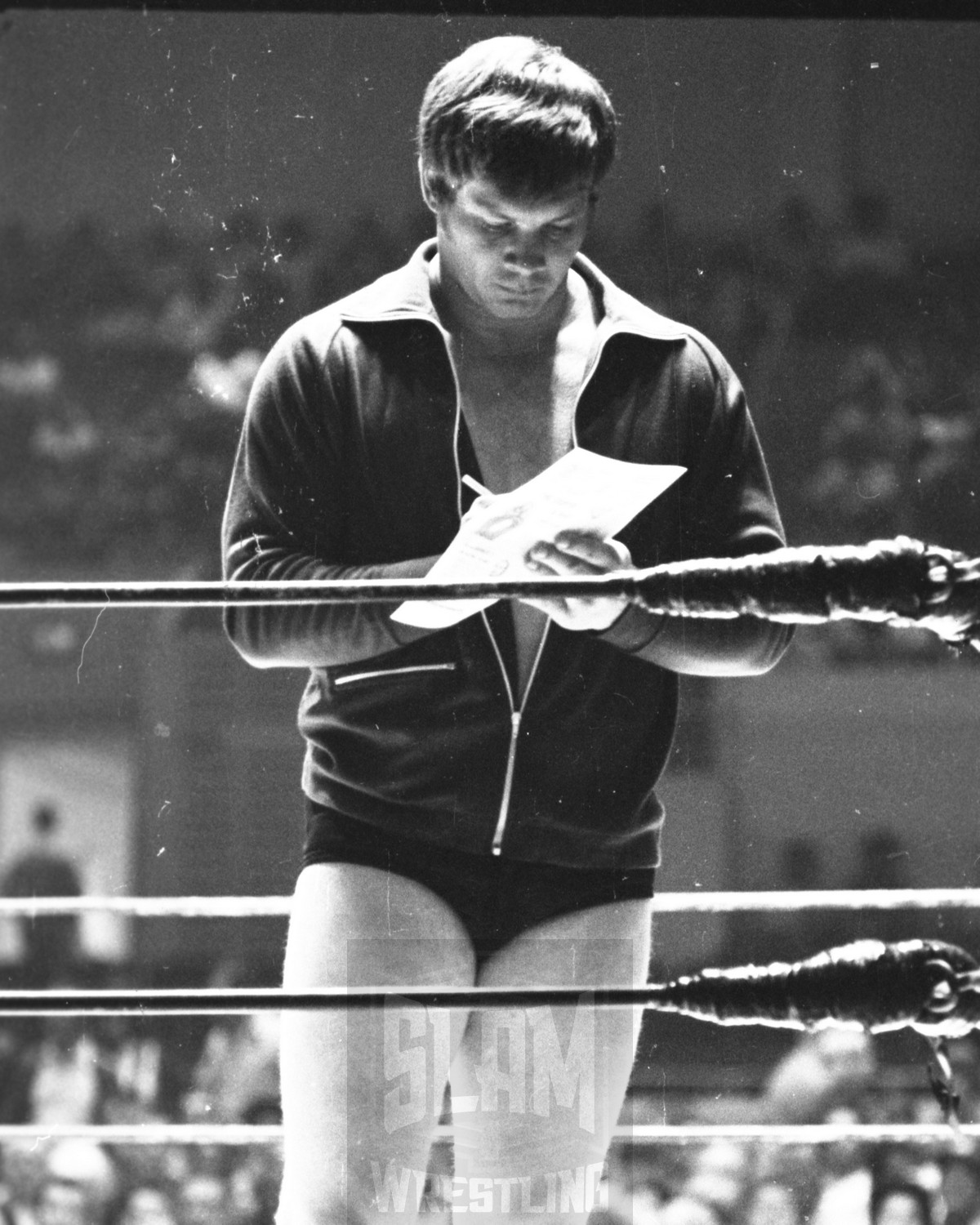
Bob Bruggers signs an autograph. Courtesy Chris Swisher
In the ring, Bruggers’ gimmick was football.
“People liked the fact that I used to play football. When I went into the ring, especially when I was in North Carolina, back in those days, the Miami Dolphins were a big deal. I used to wear my Miami Dolphins jacket. They were Atlanta fans, Redskins fans or Miami Dolphins fans,” he recalled. “A lot of those people were Miami Dolphins fans because that’s when the Dolphins were starting to do really well — they were undefeated that year.” (He didn’t ever recall wearing a Chargers jacket, though.)
Truthfully, it was a fairly short career.
“I had a good run,” is how he summed it up.
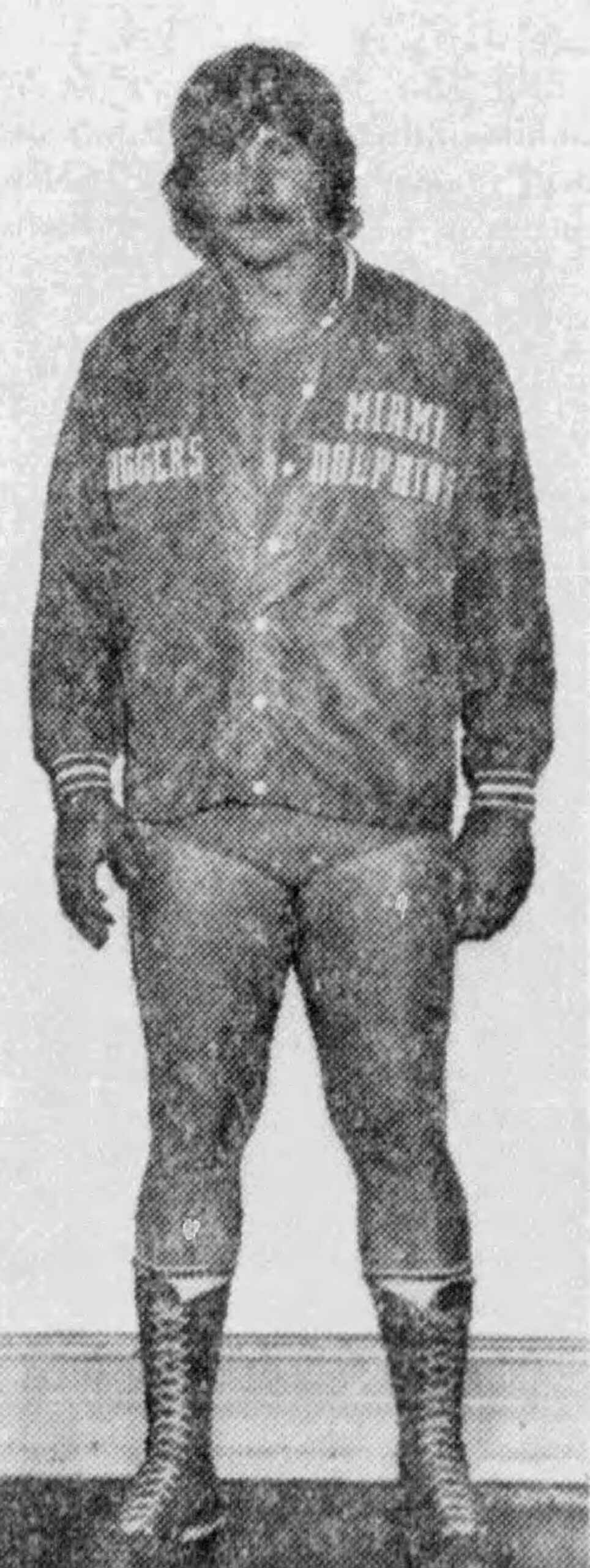
Bob Bruggers in his Miami Dolphins jacket circa 1974.
One highlight was a Mid-Atlantic tag team title run with Paul Jones in 1974. In a Mid-Atlantic Gateway interview, Jones said Bruggers “was a hell of a guy, we were good friends. George Scott loved him because he was a football player and was Wahoo’s buddy. Here’s all you need to know about Bob. I went over to Bob’s right before New Years and asked him, ‘Bob, where are you going for New Years Eve?’ and he said ‘I’m going to stay home.’ And I said, ‘You’re staying home?’ and he said ‘Yeah, that’s amateur night out.'”
The career in the ring ended with a broken back in one of the most famous plane crashes in wrestling history.
On October 4, 1975, Bruggers was on a small plane flying from Charlotte to Wilmington, N.C., with fellow wrestlers Johnny Valentine, Tim Woods and Ric Flair, and announcer David Crockett. The pilot, Joseph Michael Farkas, made a mistake and the plane went down just short of the runway. Farkas died, Valentine never wrestled again, and Woods was briefly in hospital but was rushed back to be seen by fans lest they realize that Woods was actually Mr. Wrestling and that he had been traveling with villains. And Flair continues to still woooo. [See The plane crash that changed wrestling]
“That plane crash didn’t help me at all, heh heh. Wahoo and I were going to go to Australia and then we were going to go to Japan,” Bruggers said. He’d already done one seven-week tour of Japan and was looking forward to going back. In a 1973 magazine profile that listed all Bruggers’ credentials as a legit athlete, he said that he was all-in on pro wrestling. “This is what I want,” said Bruggers, “not only to be able to wrestle and to get paid for it, but to travel, see the world, and get paid for it.”
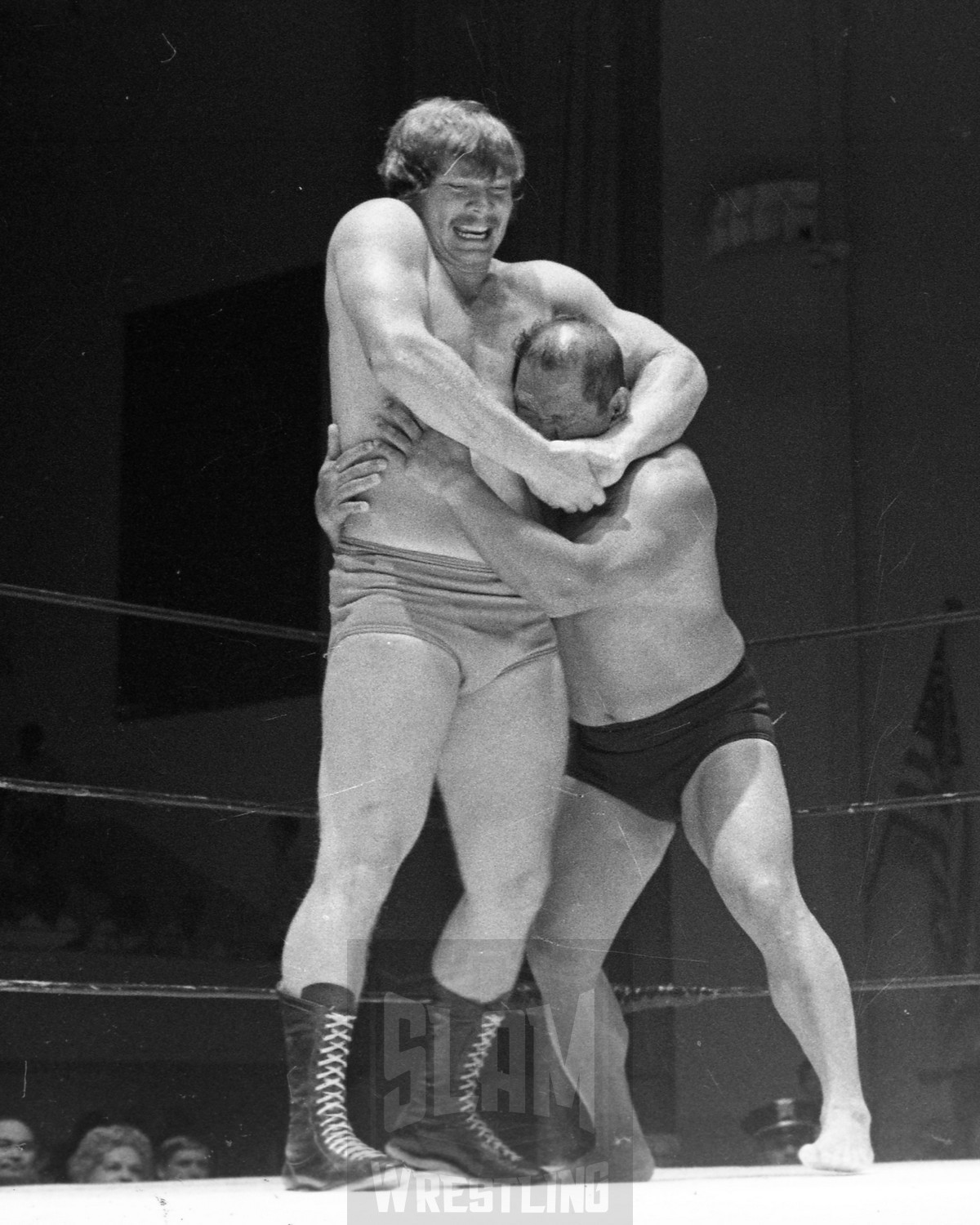
Bob Bruggers with a headlock on Tosh Togo. Courtesy Chris Swisher
The fondness for Wahoo, who died in 2002, was evident, as Bruggers talked.
“He was a typical crazy Indian, I’d say. He was one of these guys, if he liked you, he’d give you his right arm. If he liked you, he liked you. Very nice guy,” he began. “If you did him wrong, he could whip your ass. Heh heh.”
“He was quick with the fists sometimes, but the thing is, he defended the people he loved.”
They both were a little wild on the road, using the term “mostly married.”
“He was a great guy. I went out with his sister. … that’s a story I’ve never told anybody else.”
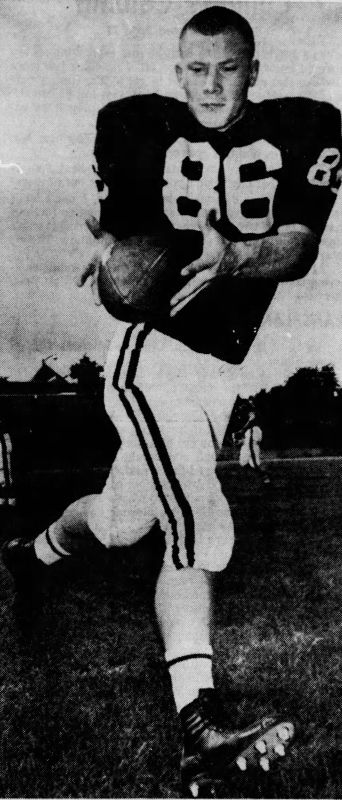
Bob Bruggers in 1963
Bruggers grew up in a much less wild environment in Roseland, Minnesota, a town so small — population 65 — that they had to get their mail in Blomkest, which was four miles away. Danube High was 11 miles away from his house.
“The name of our church is the Roseland Reform, used to be the Dutch Reform and is now the American Reform,” Bruggers told the Miami News in 1966. “They’re very strict. Opposed to going to movies, playing sports or indulging in any kind of pleasurable activities on Sundays. Also against big cities — the wiles, temptations and blinding bright lights.” Bruggers later had to convince his parents to let him play football on Sundays.
After recuperating after the crash, Bruggers settled in Florida, using some of the crash settlement for a bar that went under, and then just worked for someone else at the Hut Lounge and Package Store.
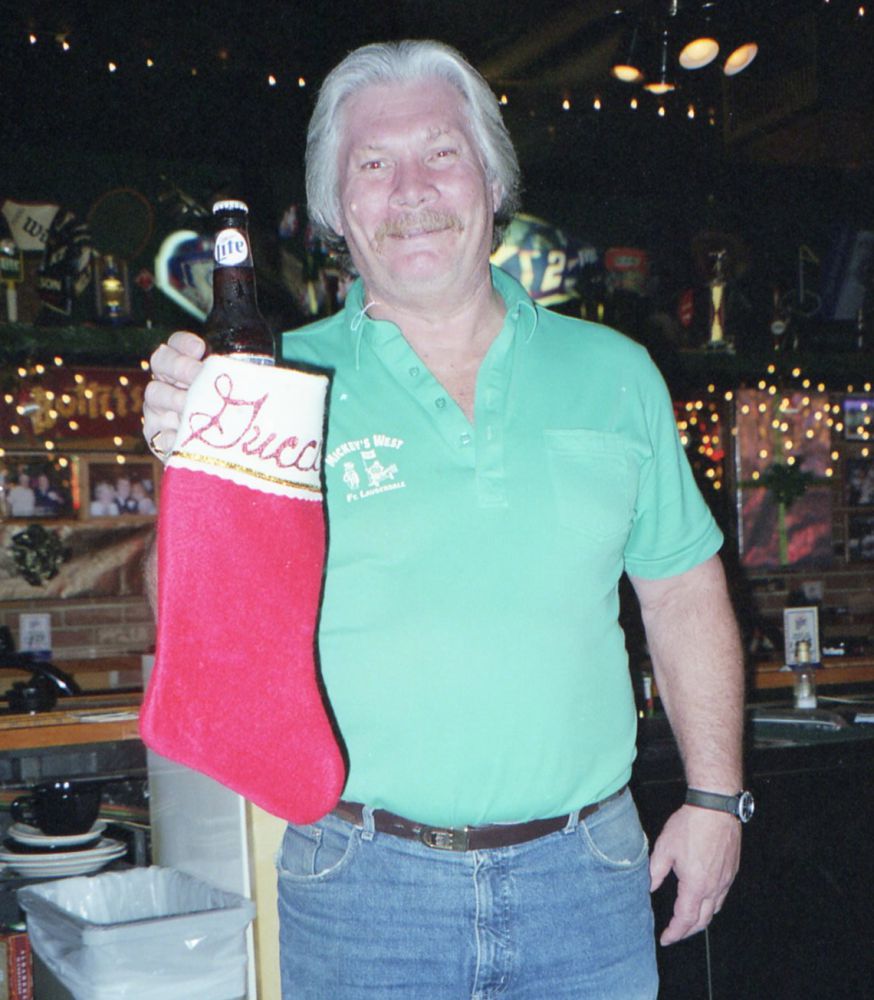
A more recent photo of Bob Bruggers. Photo by Dan Santoro
In a 2006 profile of Bruggers in the South Florida Sun-Sentinel, writer Alex Marvez wrote that the “creaky Fort Lauderdale dive” bar “is on the side of a strip mall just off Sunrise Boulevard across from the Galleria. The aged clientele generally consists of the same dozen or so regulars who start their day with a cup of coffee or a stronger eye-opener.”
Bruggers had come to terms with the injuries, and knew he wasn’t alone, even if the drama of the plane crash was far more than the crashing of bodies on the field and in the ring.
He went up to the University of Minnesota when a new stadium was opened. “A bunch of the old guys were walking up, and one guy said, ‘Ever see so many people limp in your life?’ Everybody had an injury,” said Bruggers. “That’s the price you pay for playing the game. At the time you’re playing it, you don’t think about it.”
Details of his death on Friday, May 10, at the age of 80, are unclear.
Bruggers had a son and a daughter, and two grandsons. Funeral information is not known at this time.
RELATED LINK
